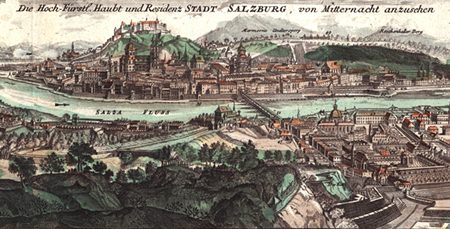
Two friends of mine used to travel a lot together, especially in America. Although they had no family connections, they just happened to share the same surname. They were invariably asked “Are you related?” One of them amused himself by responding, “Yes, but not to each other.”
Ask any Western musicians which classical composers they most admire, and the chances are that the name Bach will come up. In the Welsh language, the word bach means “small”, which the Bach family certainly wasn’t. It included dozens of musicians and a handful of notable composers still revered today. The family played a significant role in German music for nearly two hundred years.
These days, the best-known of the whole bunch is Johann Sebastian Bach who inherited the traditions of a powerful and united family. But just look at all these musicians: Carl Philipp Emanuel Bach, Gottfried Heinrich Bach, Johann Christian Bach, Johann Christoph Friedrich Bach, Johann Gottfried Bernhard Bach (all sons of JSB), Christoph Bach (his grandfather), Johann Ambrosius Bach (his father), Georg Christoph Bach, Johann Aegidius Bach (both uncles) and Johann Christoph Bach (his brother). I can sense your eyes glazing over already so I’ll stop there, even though there are about fifty more of them.
Henry Purcell had a younger brother called Daniel, who also wrote music. Ferdinand Schubert was an Austrian composer remembered for his role in publishing the works of his younger and more famous brother, Franz. Arnold Mendelssohn also wrote music and was the son of Felix Mendelssohn’s second cousin Wilhelm. Mendelssohn had a sister called Fanny (honestly) who was a pianist and composer. Clara Schumann, the wife of composer Robert Schumann was one of the most distinguished pianists of her time. Alma Mahler, the wife of the more famous Gustav, wrote some attractive songs. The opera composer Puccini had a brother and father who wrote music, though not quite in the same class.
Leopold Mozart was born in Germany and moved to Salzburg in 1737. He was well-known during the middle of the eighteenth century as a composer, violinist and violin teacher. He actually made his name with a book crisply entitled Versuch einer gründlichen Violinschule, a detailed study of violin playing.
The most common trombone these days is the tenor, used in orchestras and many jazz ensembles. There’s also the bass trombone which usually appears in large orchestras. Today, the small alto trombone is a rare beast indeed, but it was popular during the eighteenth and early nineteenth centuries. It appears in the scores of several Beethoven symphonies and in nearly all the symphonies of Schumann and Brahms.
This concerto was written in 1756 in the same year that Wolfgang Amadeus was born. It was composed for Thomas Gschladt, the finest Austrian trombone player of the day. In the score, Leopold Mozart wrote that he wanted no one else to play the work, but I’m sure he wouldn’t have been disappointed with this fine performance. The concerto begins with a lyrical slow movement, followed by an elegant minuet and trio, concluding with a final fast movement and cadenza. As an encore, Ricardo Mollá plays his own tenor trombone arrangement of the main theme from the slow movement of Dvoák’s New World Symphony.
Michael Haydn was the younger brother of the more famous Franz Joseph Haydn. The elder Haydn regarded his brother’s music highly, and even felt that Michael’s religious works were better than his own. Michael wrote it in December 1771, following the death of the splendidly-named Count Archbishop Sigismund von Schrattenbach. Interestingly, both Leopold Mozart and his son Wolfgang came along to the first three performances of the Requiem in January 1772. It was around the time of Wolfgang’s sixteenth birthday and the work had a lasting impression.
The mass is divided into seven sections and is typically scored for soloists, mixed choir and orchestra. The performance was filmed in almost total darkness in what appears to be a deserted factory, lit by batteries of theatrical spotlights. The choir members wear dark baggy overalls giving the impression that they’re either all Finnish garbage collectors or operatives at a boiler-house. Even so, this is an extraordinary performance with some very fine choral and solo singing.
The opening Requiem aeternam is sung over a melancholy plodding bass line with beautiful melodies and sumptuous harmonies. And do you know? Among the brass players in the semi-darkness, I think I spotted an alto trombone. Oh, and by the way, Johann Sebastian Bach also had a grandson with exactly the same name. Not many people know that.
 |
 |
 |





